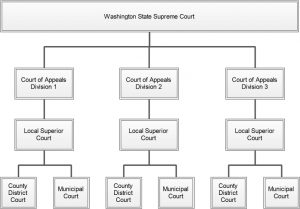Black’s Law Dictionary provides us with this definition of a garnishment:
“A judicial proceeding in which a creditor (or potential creditor) asks the court to order a third party who is indebted to or is the bailee for the debtor’s property to turn over to the creditor any of the debtor’s property (such as wages or bank accounts) held by that third party. A plaintiff initiates a garnishment action as a means of either prejudgment seizure or postjudgment collection.”
The vast majority of garnishments (more formerly a “Writ of Garnishment” or more casually a “Writ”) are issued post-judgment (that is, after the court has awarded a judgment in favor of one of the parties) and are served either on employers or banking institutions (banks, credit unions, etc). However, it is possible for writs to be served on individuals. It is also possible, though extremely rare, for a prejudgment garnishment to be issued. The focus in this lesson will be on post-judgment garnishments.
Understanding Garnishments
Garnishments are used to collect funds due and owing on an existing court judgment. For illustration imagine the following scenarios.
Scenario #1
John Smith owes the Western Department Store $500. The people at Western attempt to collect the debt by sending demand letters to Mr. Smith and by calling him on the telephone. Mr. Smith declines or refuses to pay the outstanding bill. Western assigns the account to XYZ Collection Company. The people at XYZ also send demand letters to Mr. Smith and contact him on the telephone. Mr. Smith still does not pay the bill.
XYZ Collection Company then brings suit against Mr. Smith in Skagit County District Court for the amount of the debt plus all costs associated with their efforts to collect for Western Department Store. Mr. Smith is served with a Summons and Complaint. He fails to appear and a judgment is rendered by the court in favor of XYZ. Still Mr. Smith refuses to pay the bill and likewise fails to pay the additional costs which are now a part of the overall judgment rendered against him.
As part of their collection efforts XYZ has learned the name and location of Mr. Smith’s employer and the name and location of the bank where Mr. Smith has an account. XYZ now has several options. Two of those options involve the garnishment of property and assets belonging to Mr. Smith. One of the assets is the wages owed Mr. Smith by his employer, North State Manufacturing, another is his bank account Big Town Bank.
XYZ Collection Company, through their attorney, issues a Writ of Garnishment against Mr. Smith and it is served on Big Town Bank, now known as the “garnishee defendant”. The entire contents of the account, up to the amount of the judgment (plus all costs associated with the suit and the garnishment), are subject to the garnishment. The funds must be turned over to the court which then turns the funds over to XYZ which then turns a certain amount over to Western Department Store, the original creditor.
NOTE: This garnishment is effective one time on the bank. If the account is emptied, as in this example, and Mr. Smith walks in the next day and deposits more funds, this garnishment has no effect on those newly deposited funds. If XYZ learns of those additional funds and wants them, then they must issue another garnishment directed at the bank.
Scenario #2
As it turns out, the bank account at Big Town Bank failed to fully satisfy the judgment and associated costs. XYZ, again through their attorney, issues another garnishment but this time directed at Mr. Smith’s employer, North State Manufacturing. Now North State is the garnishee defendant.
This garnishment is different than the one served on Big Town Bank in that it is a continuing lien on Mr. Smith’s wages. North State must now withhold a certain amount from Mr. Smith’s wages and turn that amount over to the court who turns it over to XYZ who turns some of it back to Western Department Store. (The amount turned over to the original creditor is usually set by contract when the account is first assigned to a collection agency.)
As the phrase implies, this is a “continuing lien” on Mr. Smith’s wages. If Mr. Smith continues his employment at North State the garnishment will remain in effect for a time period specified by law (usually 60 days). North State is required to continue withholding his wages until the time period has run or until the judgment and costs are paid in full. If the time period expires before the debt is paid then XYZ Collection Company is allowed to issue another garnishment to North State Manufacturing and continue doing so until the debt is paid.
Garnishee defendants, such as Big Town Bank and North State Manufacturing, are required to withhold the funds as directed in the garnishment or the judgment creditor (XYZ Collection Company) can take a judgment against them for the full amount they should have withheld.
As shall be seen in the next article (Serving Post Judgment Garnishments), it is possible to serve a garnishment by certified mail but many attorneys and collection agencies continue to use process servers to serve them. There are probably several reasons for this but certainly one of them is the ability to time the service of the garnishment with great precision. Many collection agencies will issue “bank writs” (a Writ of Garnishment directed at a bank) and then ask the process server to hold them until the agency knows there are funds in the account they are targeting. Then, when it is known the funds are in the account, the agency will call the process server and instruct them to serve the garnishment that day. This creates a tracking issue for the server in that he must safely store the garnishments until the instruction to serve it is received. Experience indicates this is not unduly burdensome but care must be taken to preserve the garnishment in an easily accessible location from which it can be quickly retrieved for service.
This quiz is for logged in users only.



 This is a rough diagram of a typical courtroom in the state of Washington. Courtrooms vary a great deal from city to city and county to county but they all have the same basic structure.
This is a rough diagram of a typical courtroom in the state of Washington. Courtrooms vary a great deal from city to city and county to county but they all have the same basic structure.




